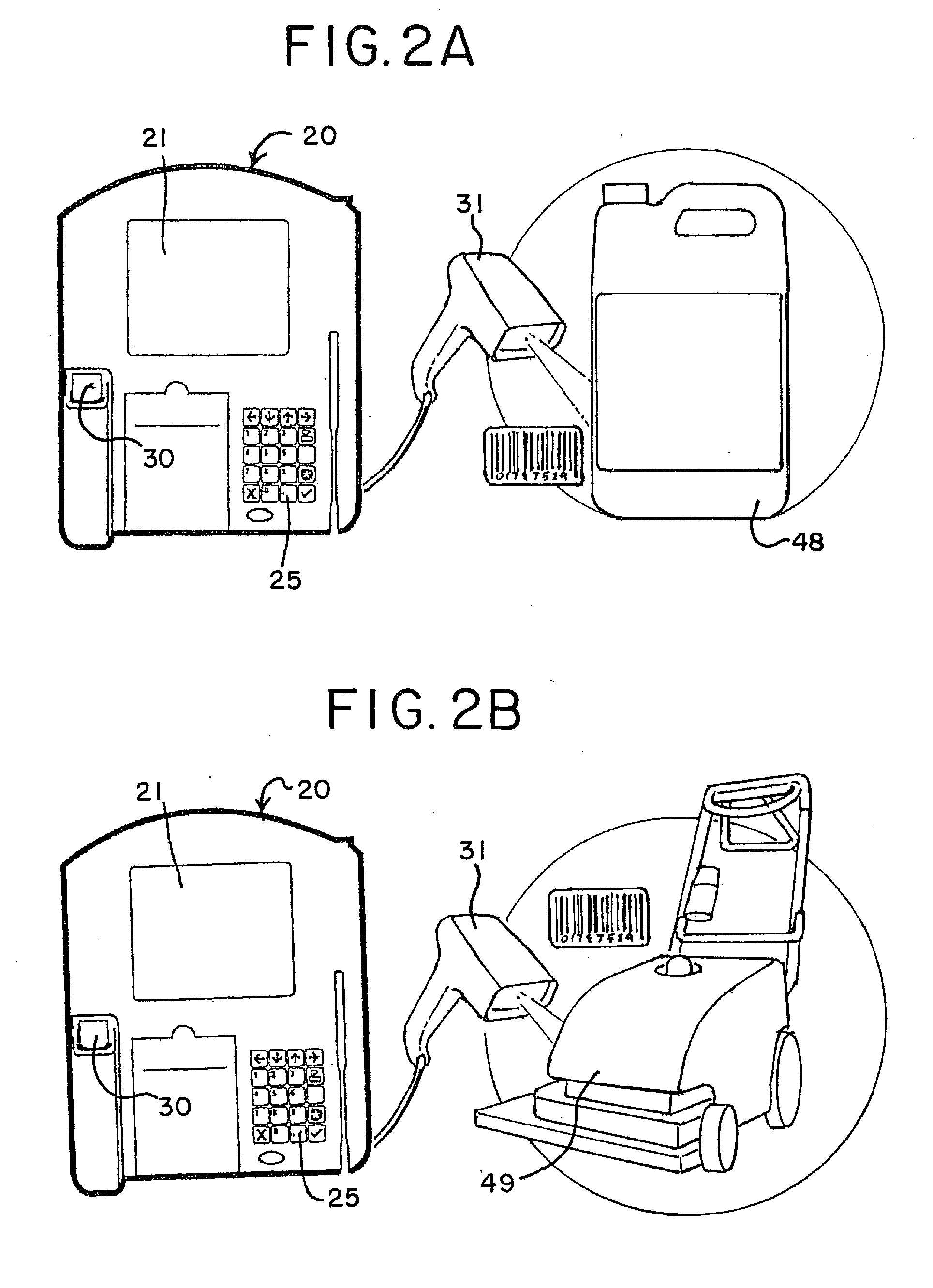Biometric multi-purpose biometric terminal, payroll and work management system and related methods
a multi-purpose, biometric technology, applied in the field of biometric multi-purpose terminals, payroll and work management systems, can solve the problems of high installation and operation costs of devices, inability to economically justify installing and operating such a prior art biometric time clock, and the cost of installing and operating a remote biometric time clock may actually exceed the profits generated. , to achieve the effect of low cos
- Summary
- Abstract
- Description
- Claims
- Application Information
AI Technical Summary
Benefits of technology
Problems solved by technology
Method used
Image
Examples
Embodiment Construction
[0099]Referring to the Figures, and particularly to FIG. 1, an electronic APW terminal is generally designated 20. Electronic APW terminal 20 has ATM, payroll and work management (APW) capability, and may hereinafter also be referred to as an APW terminal 20. Disposed near an upper end of APW terminal 20 is a display screen 21 for displaying information, options, commands, work assignments, messages or the like. Display 21 may be of the liquid crystal display (LCD) type for displaying a plurality of different screens of information, as will be presented in greater detail below. The APW terminals may be located wherever employees usually check-in or check-out of work, such as at the employer's facilities, or at the customer's facilities in those instances where the employees work at the customer's facilities, such as for example, janitorial or cleaning staff.
[0100]APW terminal 20 is equipped with a card reader 38 (FIG. 3) disposed alongside a slot 22 for reading a bankcard 23, a keyb...
PUM
 Login to View More
Login to View More Abstract
Description
Claims
Application Information
 Login to View More
Login to View More - R&D
- Intellectual Property
- Life Sciences
- Materials
- Tech Scout
- Unparalleled Data Quality
- Higher Quality Content
- 60% Fewer Hallucinations
Browse by: Latest US Patents, China's latest patents, Technical Efficacy Thesaurus, Application Domain, Technology Topic, Popular Technical Reports.
© 2025 PatSnap. All rights reserved.Legal|Privacy policy|Modern Slavery Act Transparency Statement|Sitemap|About US| Contact US: help@patsnap.com



